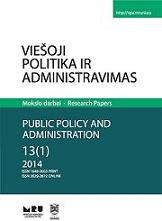Valstybinio socialinio draudimo motinystės (tėvystės) išmokų reglamentavimas: pašalpų gavėjų struktūra ir pasirinkimai
The Regulation of State Social Insurance: Structure and Choices of Beneficiaries
Author(s): Audronė Telešienė, Tadas ŠarlauskasSubject(s): Politics / Political Sciences
Published by: Mykolas Romeris University
Keywords: family policy models; parental allowances; parental leave
Summary/Abstract: The main focus of this article is on parental leave and allowance system in Lithuania. This study analyses main changes in this system, when in 2011 new version of Sickness and maternity social insurance law was adopted in Lithuania. Article presents and discusses theoretical models of family policy, analyses Lithuanian family policy and job/paternity reconciliation problems. With reference to different authors’, the article is based upon theoretical discussion of family policy models. Traditional male breadwinner model is opposed to other models: caregiver-parity model, dual-earner model and dual-carer model. Analysis of state social insurance parental allowance system and beneficiaries in Lithuania is conducted based on data sets from State Social Insurance Fund Board and expert interviews. There are two main questions answered in the article: what is the structure of parental leave beneficiaries and how did it change after amendment of Sickness and maternity social insurance law; what are the typical choices of those going for parental leave. What work/family model is induced by these changes and does it comply with the aims of the new Sickness and maternity social insurance law. Analysis of Lithuanian state social insurance parental allowance system and choices of beneficiaries showed clear policy tendencies to move forward to more male breadwinner model. With the emphasis on long periods of absence from work and relatively small compensations, new parental leave policy devalues family care in relation to employment and does not provide choices for women to (re-)move from family care to employment.
Journal: Viešoji politika ir administravimas
- Issue Year: 13/2014
- Issue No: 1
- Page Range: 95–108
- Page Count: 14
- Language: Lithuanian

